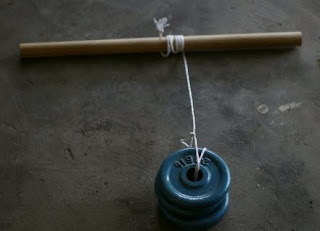Saifa #1
My current focus of training is the kata saifa. I know, I know, sequentially it is the first "real" kata in most goju schools and could be viewed as a poor cousin to its more glamorous and senior katas such as kururunfa or sepai, but I really, really like it. (I haven't learned sepai yet either, so that rules that out) Coming from a shotokan background (and an eclectic one at that: the only kata were 6 taikyoku and the 5 Heian - the remaining majority were not practised at any level within the organisation), saifa was a revelation to me. Our method of training it (learning the meaning of the technique represented in the kata), the manner of body movement and the way in which it immediately "fit" with me were all pleasantly surprising. For a short, relatively straightforward kata, there is a high degree of finesse and technical complexity contained within it. It contains (apparently) relics of the old, hidden manner of passing on kata in its mi...


